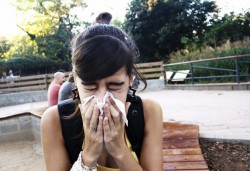The increase in pollen allergy in the urban environment seems to be a reality endorsed by data from the health authorities. Each spring, experts at the Spanish Society of Allergology warn through mass communication about the increasing effects of pollen allergy in the population. Atmospheric contamination is often put down as one of the causes of this increase, but not as the only origin. The explosive cocktail suffered by many allergic people with the arrival of the good weather is made up of many ingredients.
The journal Aerobiología reveals in its latest edition one of these causes, something that has been studied little until now. It is the use of exotic plant species in the urban landscape, against which a study undertaken by researchers of the Department of Plant Biology and the Spanish Network of Aerobiology, Carmen Galán and María José Velasco, warn. In their investigation they compare the levels of pollen in two cities with similar climates but different in their use of decorative plants and flowers in the streets. Cordoba and Ascoli Piceno, on the Adriatic Italian coast, conclude that they haven’t known how to adequately combine the creation of new green zones with health factors.
The researchers have verified an excessive use of American and Asian species, with more allergenic pollens, to the detriment of native flora, something common in the Italian city. Specifically, the study warns of the excessive use of the cypress and the plane tree, which emit large quantities of pollen. The researchers also talk about how urban expansion has generated peripheral zones with ‘uniform, monotonous and characterless landscapes’, as well as a loss of important biodiversity. Because of this, they recommend that municipal landscapers control aspects related to allergic conditions when designing the green zones of a city.
Jueves, 22 Diciembre 2016 16:58
Warning of an increase in allergies due to the use of exotic plant species in local landscapes
Escrito porUrban expansion has provoked the loss of biodiversity, promoting monotonous landscapes with abusive levels of highly allergenic species.
Publicado en
Biomedicina y salud

